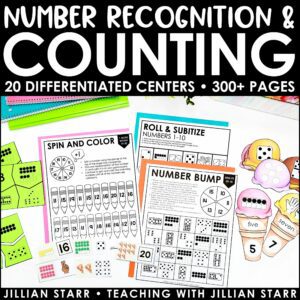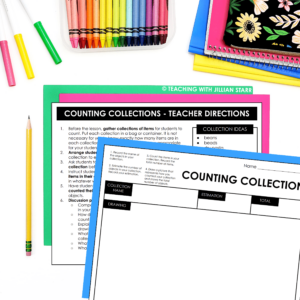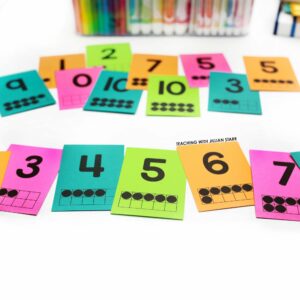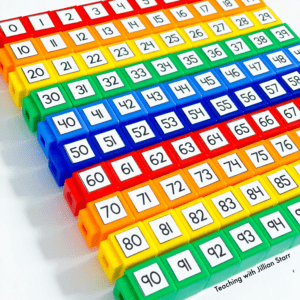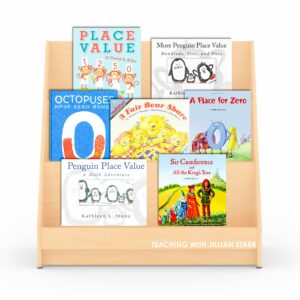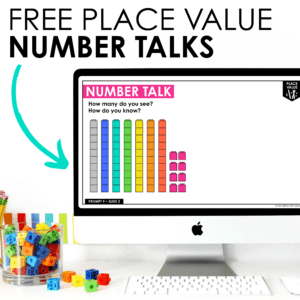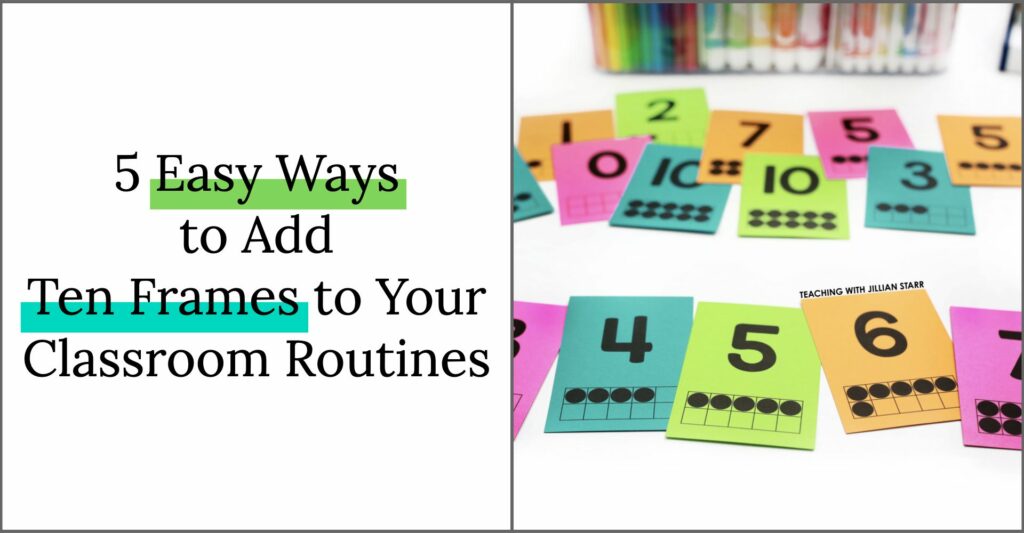
Ten frames are easily one of my favorite visuals to use with students in primary grades. These little two-by-five rectangular frames are a great way to build number sense within the context of ten.
Ten frames help develop and reinforce so many important math skills:
- forms mental images of numbers
- reinforces relationships to benchmark numbers like 5 and 10
- naturally decomposes numbers (5 + some more)
- introduces the concept of unitizing (ten counters can be counted as “one” group)
- provides a strong sense of “ten” which will support place value and mental math strategies
- and more…
There are so many benefits to ten frames, and today I wanted to share a few ways you can even carry ten frames outside of your math block! (Building number sense throughout the day? Yes, please!)
Ten Frames At School/Away Boards
A quick and easy way to include ten frames into your students’ daily routine is by including them in your “At School” board. I’ve also seen them called an “Attendance Board,” an “I’m Here Board,” or a “Where are You?” board.
This can be a great way for students to visually see how many students are currently in the classroom by utilizing the visual of ten frames. If you have twenty-four students in your class, students can look to see if two ten frames are filled and how many “extra” there are in the final ten frame. This will help with the immediate recognition that two ten frames (two groups of ten) is twenty, and the counting on by ones.
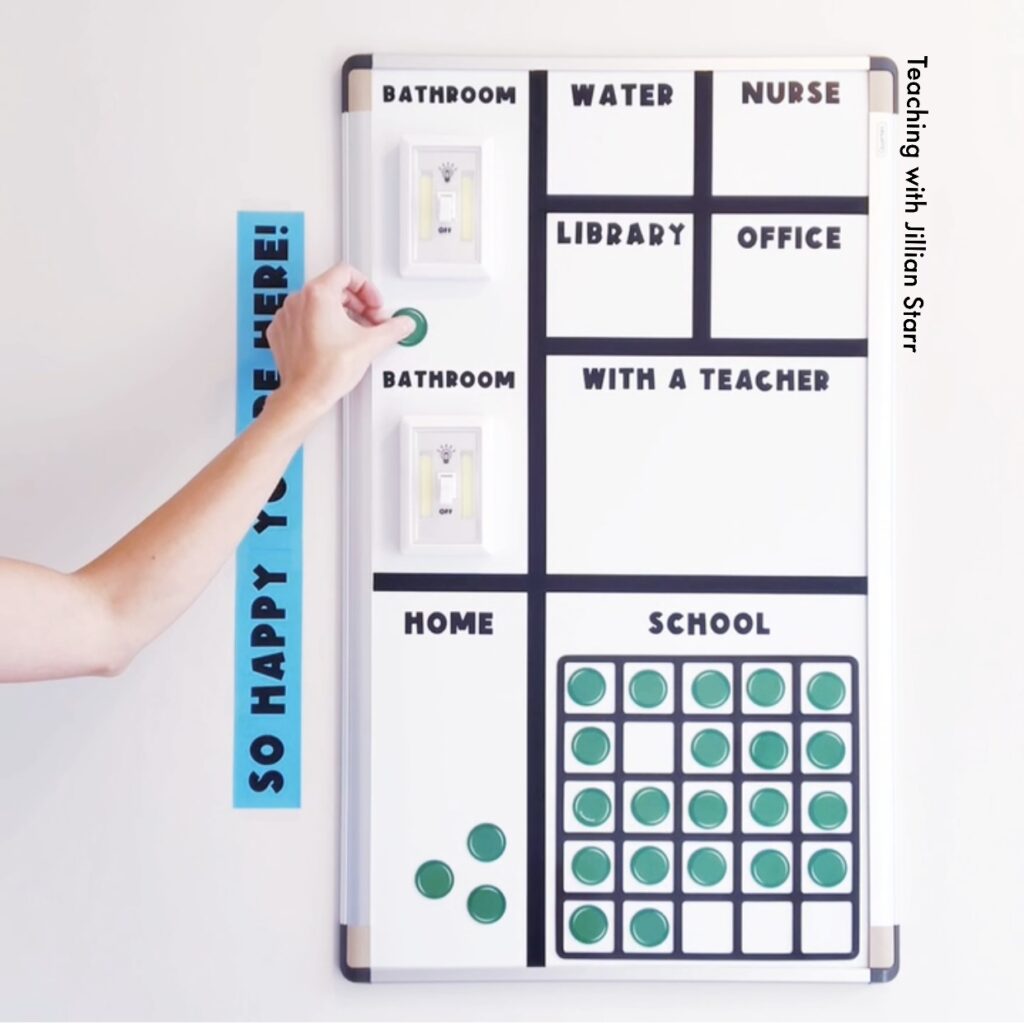
Additionally, the routine of filling in the ten frame is a great way to reinforce benchmarks of five and ten. It’s important to explicitly teach students to fill each row of the ten frames from left to right (building the benchmark of five). Once a ten frame is complete, they have created one group of ten, and can now begin building a new group of ten.
Frequently asked questions about this board:
- Student names are written on the counters. I chose to take this photo of our ten frames prior to writing their names to protect student privacy.
- This is with second graders who already had a solid understanding of ten. I chose to switch out our three separate ten frames mid-year to a 5×5 array. This model helped with both benchmark numbers AND support an early understanding of arrays.
- The light switch is from Amazon, and the magnetic arrays or ten frames are from Lakeshore Learning.
Ten Frames Chart for Days We’ve Been in School
Another simple way to implement ten frames into your routines is with your “Days We’ve Been in School” board. I have done this in two different ways, each with a different focus.
Focus on Place Value and Regrouping
These place value kits for counting the days we’ve been in school can easily be found online. However, they usually come with straws or something else that students can put into “bundles” of ten. I prefer to swap out the straws with ten frames!
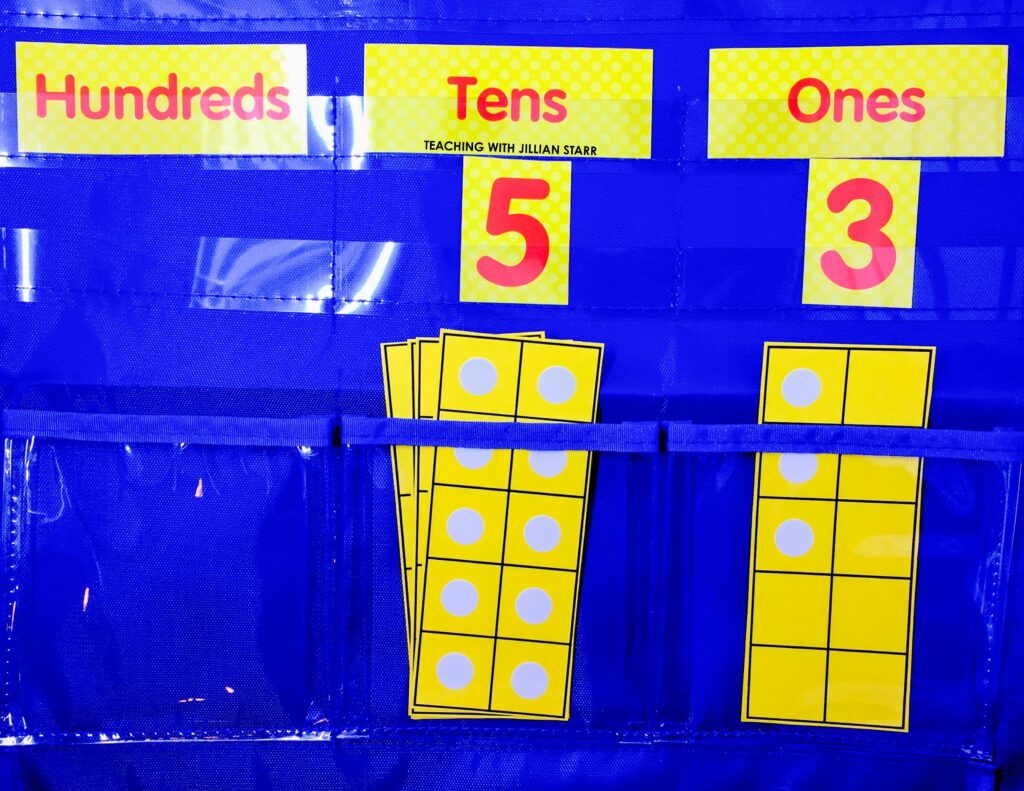
This model is great for helping students see ten (which I feel is much more difficult with bundles of straws). When we complete a ten frame, it is moved from the ones place to the tens place. When we complete 10 ten frames, we band them together and place the bundle in the hundreds place.
Not only can this visual help reinforce ALL of the previously mentioned benefits of using ten frames, but it has the added benefit of supporting early concepts of regrouping!
Focus on Skip Counting and Unitizing
Short on space and time? This little sheet of paper only needs to be printed and stuck to a wall for it to be ready to go. Depending on the year, we have used a marker or small stickers to fill in each day.
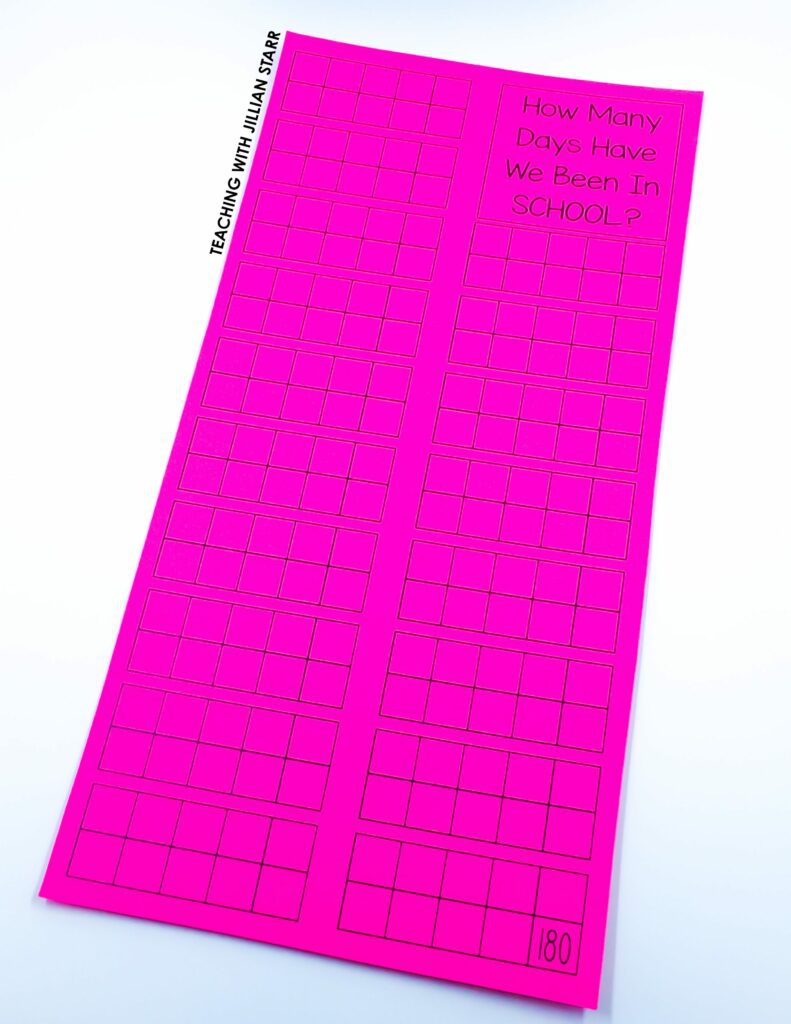
I love this option because it’s so easy, and it allows us to count the days without having to take anything out or put anything back!
Ten Frames Number Posters
A large number of classrooms include number posters. These can be really helpful visual references for students, especially in the early grades! What makes them better? Adding ten frames to them!
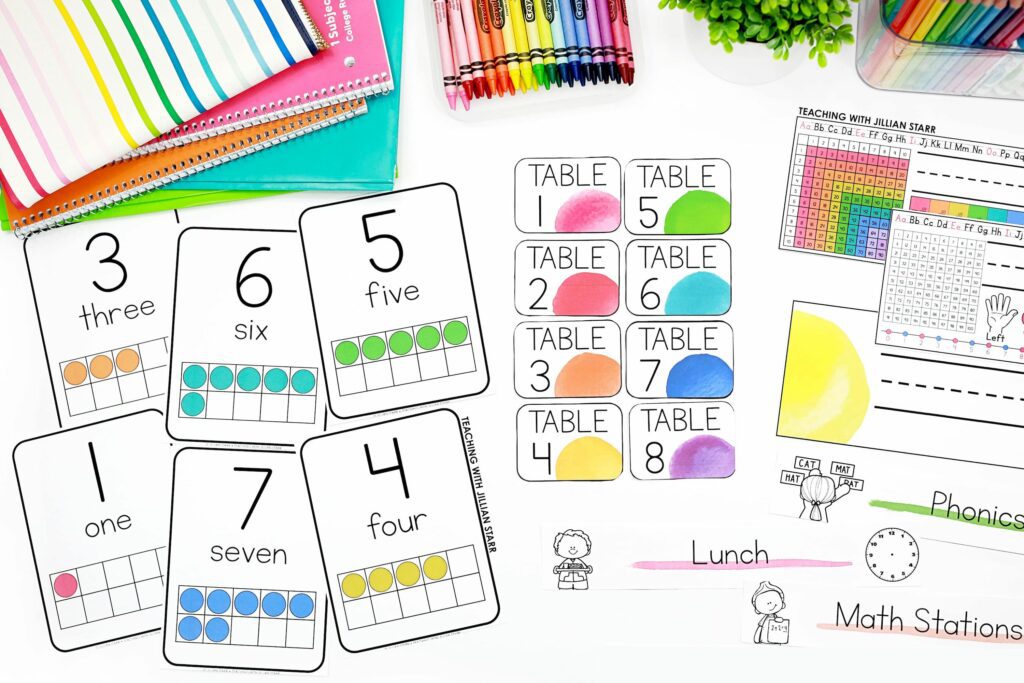
A quick addition of the ten frames can reinforce these visuals in a clear and consistent way throughout the day! ALL DAY LONG! You can find these particular style posters in my classroom decor packs.
Ten Frames Playing Cards
A favorite way to continue to add ten frames throughout the day is by trading in your regular playing cards for ten frame cards.
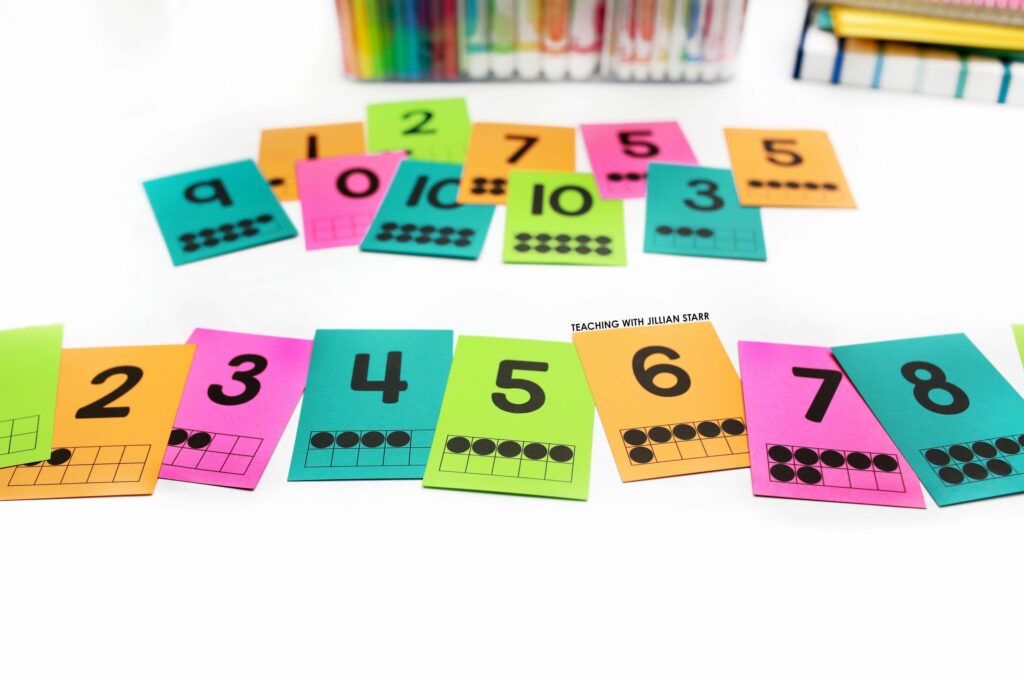
These are fantastic because not only do they reinforce the images of numbers on ten frames, but if you’re playing any addition/subtraction games, it will naturally bridge students to use the make a ten to add strategy!
You can grab these ten frame cards for free below!
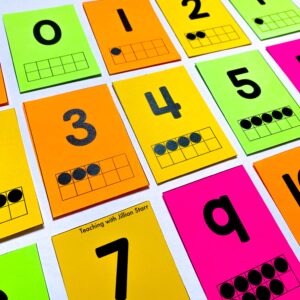
Free 10 Frame Playing Cards
Upgrade the playing cards in your classroom to include ten frames! This will immediately help reinforce skills like composing and decomposing ten, as well as subitizing with ten fames! WIN/WIN!
Ten Frames Dice & Spinners
In addition to your playing cards, you can swap out your regular dice and game spinners for ones that use ten frames. Again, they’re a great way to encourage the make a ten to add strategy. And, just like all of the others, the more ways we can highlight benchmarks of five and ten with our students using these visuals, the better!
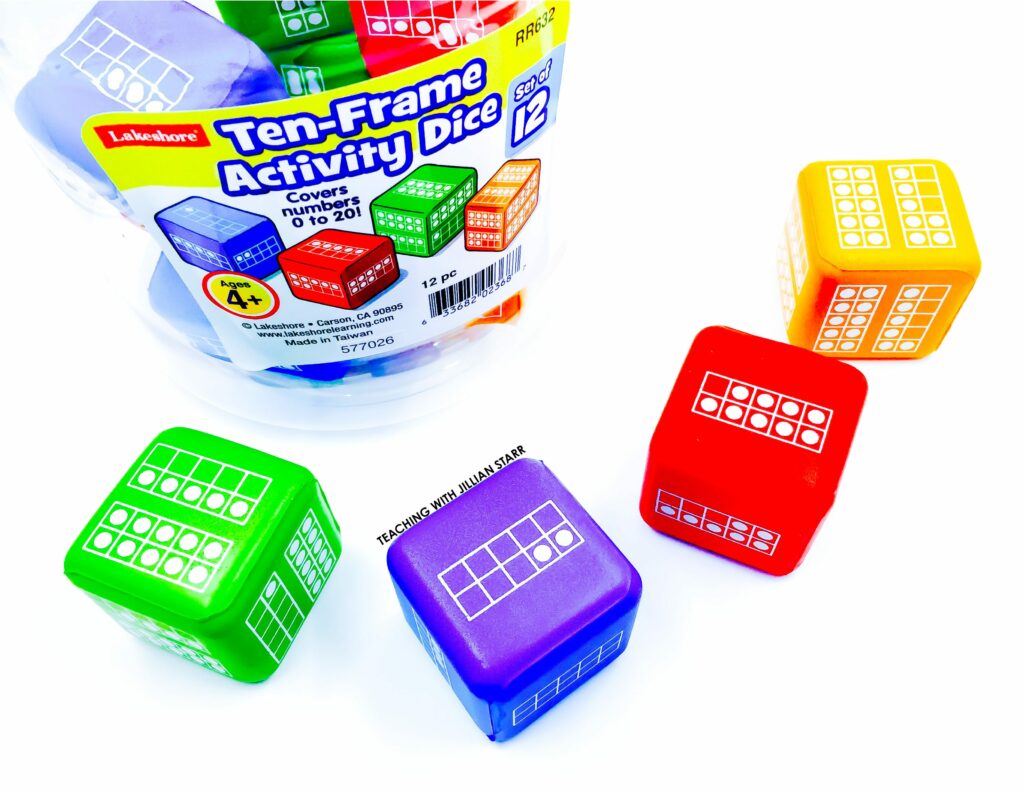

Do you have a favorite way that you incorporate ten frames into your classroom routines? I’d LOVE to hear them in the comments.
EXCITING NEWS!
First Grade Teachers, something big is coming! If you’re someone who loves digging into math concepts, or wants to become a better math teacher for your students, I’d love for you to join me. If you’d like to be the first to find out more, enter your info below!
Get on the Waitlist!
1st Grade Teachers! Something big is coming this June and I will be inviting a small group of teachers to get a first glimpse before it becomes available for everyone. If you’d like to be the first to find out more, just enter your info below!

